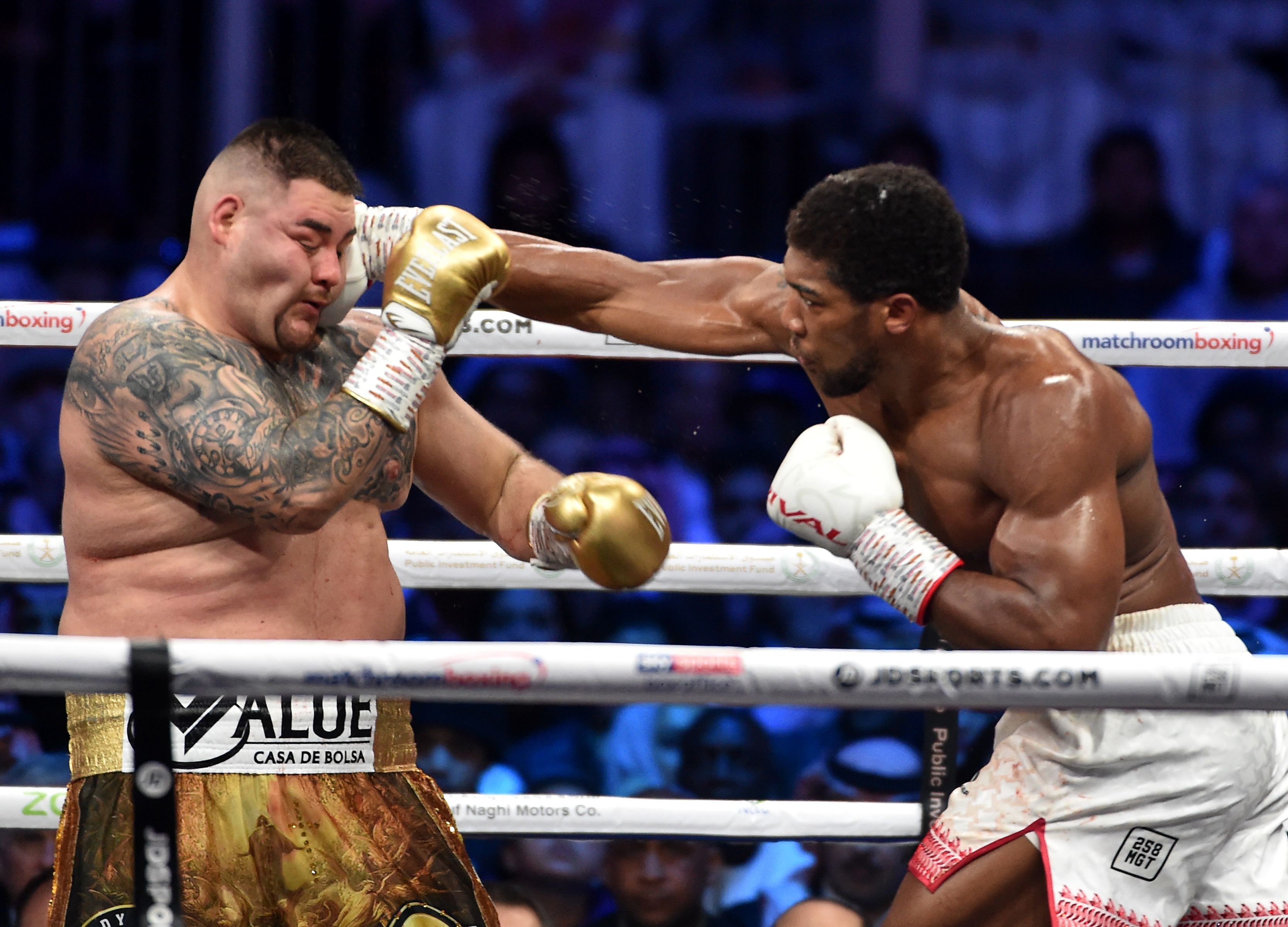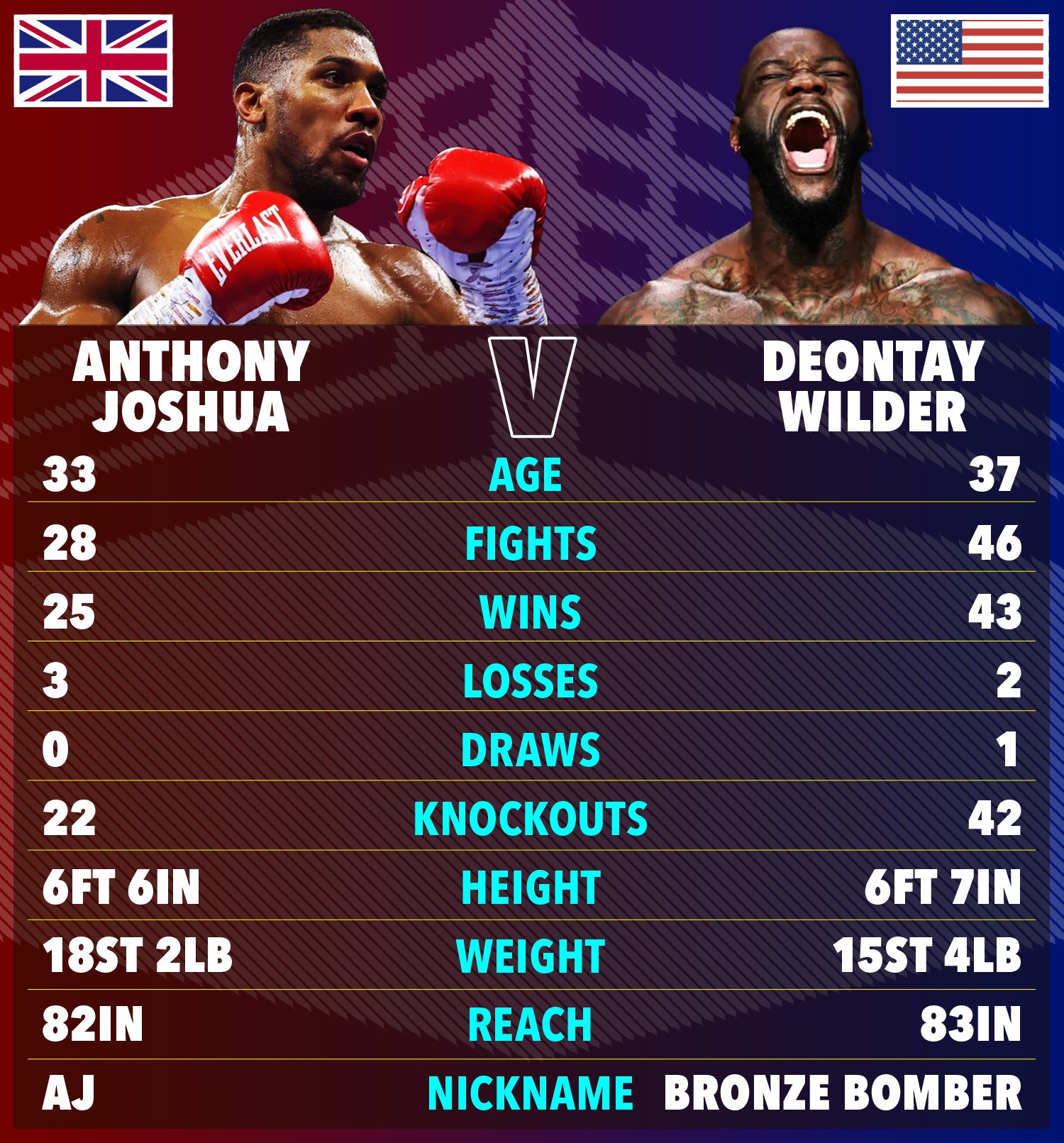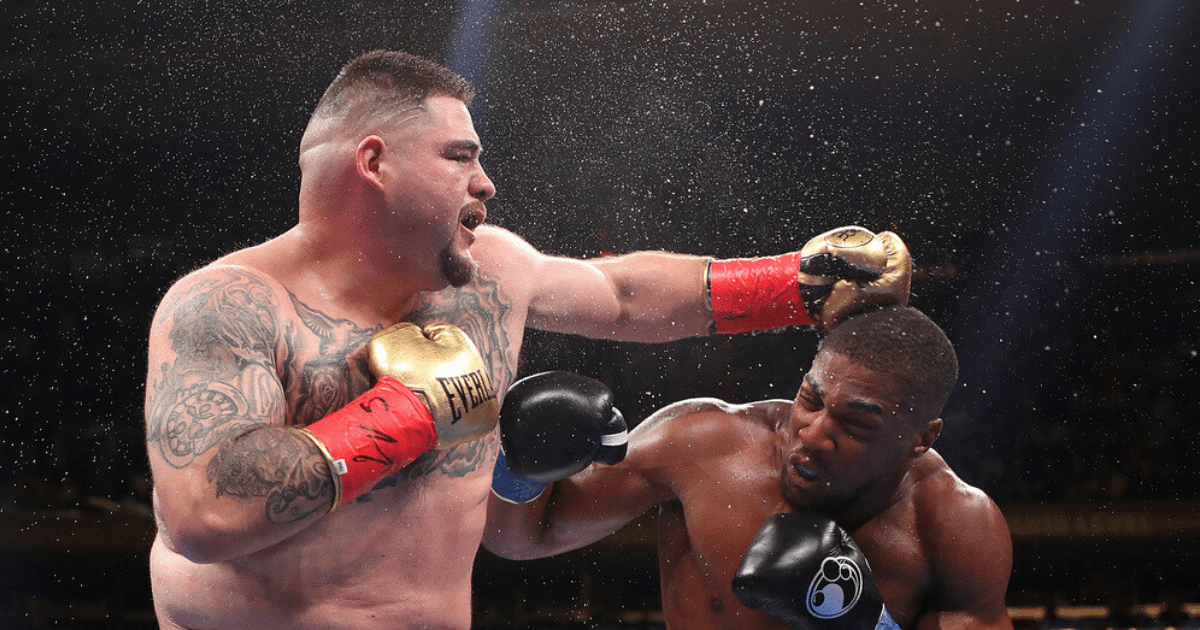ANTHONY JOSHUA has been warned his chin has been cracked and he can no longer “take a shot”.
The Watford warrior has only been stopped once in his career but has shown a susceptibility to being hurt since his stunning upset defeat to Andy Ruiz Jr four years ago.
Anthony Joshua was stopped four years ago in a huge upset defeat to Andy Ruiz Jr

AJ has boxed cautiously since being dethroned by Ruiz Jr

Barry McGuigan reckons Joshua has lost his killer instinct can no longer take a shot
AJ has boxed cautiously ever since that fateful night at Madison Square Garden, which Barry McGuigan believes but did a number on his willingness to stay in the fire.
During an appearance on William Hill’s Up Front with Simon Jordan, the former WBA featherweight champion said: “I really like Anthony Joshua and I don’t really know him personally.
“But his ability to take a shot has disappeared.
“He’s not willing to run into the lion’s den and get shots fired at him, shots that miss him by whiskers that could knock him unconscious.
“I don’t know if he has the want to do that anymore.”
McGuigan reckons AJ’s reluctance to stay in the pocket will be his undoing against his fellow elite heavyweights.
The Irishman continued: “Once that happens, I don’t think he will beat any of the top guys.
“He’s still a great fighter, but I just don’t think he beats the top guys because of that.”
CASINO SPECIAL – BEST ONLINE CASINOS FOR 2023
Joshua, 33, is set to have his chin tested in an August rematch with long-time rival Dillian Whyte.
It’s understood the pair’s third showdown is on the brink of being announced after both teams finally reached a suitable agreement.
Should Joshua get past the Brixton banger, he’ll tee up a December dust-up with long-time rival Deontay Wilder.
And promoter Eddie Hearn recently revealed the duo’s long-overdue grudge match is on the verge of being finalised.

He told Boxing News: “Obviously with our meetings with Saudi on Friday, Thursday.
“We’re in a really great place we virtually have a deal agreed in principle subject to a few final discussions.
“We’re meeting them again on Monday.
“I think we’re in a good place but we want to fight on August 12th, and it’s important to his development and his momentum that he does and that’s still the plan.”
Frequently Asked Questions
How can I practice boxing without a partner?
So, if you want to practice boxing without a partner, you can simply watch professional boxing matches on TV. You can also find an amateur boxing gym near you. Amateur boxing groups often have regular training sessions. These sessions often involve sparring partners who hit the pads together.
Boxing can also be practiced using punching bags. Before you hit the bag, make sure to wear protective gear like boxing gloves.
How do you train boxers for beginners?
Boxing is one, if not the oldest, sport in existence. But boxing only recently became more popular. Boxing is a sport that involves two fighters fighting each other in a boxing ring. They punch one another until one falls.
Find out if you are interested in boxing before you start thinking about becoming a boxer. You can also watch fights online to see how it feels like hitting someone. Once you decide if boxing is something you enjoy, you can then choose the type of fighting you prefer.
How to protect yourself
Always protect your head when being attacked. You want to avoid being punched. You must know how to stop an incoming punch. Here are the steps:
- Be tall and square your shoulders.
- Keep your elbows close to your sides.
- Your forearm can block the punch coming from your opponent.
- Counterattack immediately.
- Keep blocking until the attacker flees.
- Don’t let your defense slip.
How much weight should you lift while working out?
Weight lifting is essential if you want to improve your strength. There are some things you need to remember when lifting weights. Don’t do it too often. Aim to lift heavierweights every other days. Third, complete each exercise 8 times. Fourth, allow for 2 minutes rest between sets. Fifth, do all exercises without momentum. Finally, be focused on form, not speed.
How to throw your jab.
Follow this step-by-step guide to throw a jab.
- Step forward with both feet.
- Arrest your arm high above your shoulder.
- Place your fist on the target.
- After hitting your target, raise your arm upwards.
- Steps 1 through 4 can be repeated.
How long does it take to learn boxing?
It takes about 3 months to learn boxing. This includes learning the basics, such as footwork, stance, and balance. It’s important to remember that boxing is not only about throwing punches. It’s important to be able to block and dodge punches.
What are the different types and uses of boxing gloves?
There are three types of boxing gloves available: mitts and fingerless mitts. The padding around the knuckles of mitten gloves is called padding. Fingerless mitts don’t have any padding around your knuckles but still cover your fingers. Full-finger gloves have padding all over the hand.
For punching with the fist, mittens can be used. Fingerless mitt glove are for striking the index finger with the knuckle. Boxing gloves for full-finger punching can be obtained with full-fingered hands.
Statistics
- It is just like normal sparring with a partner, but you want to throw punches at 75% of your normal speed. (wikihow.com)
- You want to be running at roughly 75-80% of your top speed..5 mile slow, easy recovery jog at the end.[6]X Research source 2Mix in long runs, shadow boxing, and short sprints on non-interval days. (wikihow.com)
External Links
en.wikipedia.org
boxandflow.com
How To
Here are the Essential Skills of Boxing
How to box effectively
Boxing is the most loved sport in the world. Two opponents fight each other to the death. There are different rules for boxing, and they vary from one country to the next. In general, there are three types of boxing; Amateur, Professional and Olympic boxing.
Amateur boxing is often practiced at school, college, or university. This type includes sparring sessions using padded gloves, but without protection. Amateur boxing competitions typically last for three rounds, each lasting five minutes. There are many styles of amateur boxing such as Kickboxing or Muay Thai, Taekwondo and Karate, Judo and Wrestling, among others.
Boxing professionals are usually trained in clubs, gyms, or stadiums. They are equipped with protective equipment including a mouthpiece and nose guard, shinguards as well as elbow pads, knee pads. Waist belts and groin protectors. Professional boxing contests last six rounds and last for four minutes each. There are many styles of professional boxing: Boxing, MMA (Mixed Martial Arts), Kickboxing and Muay Thai.
Olympic boxing is done at the Olympics. Boxers wear special protective gear, which must conform to international standards. Each round lasts three minutes and is made up of eight rounds. Olympic boxing has only two styles, Light Flyweight vs Heavyweight.
Boxing’s fundamental skills are:
- Punching techniques
- Guarding techniques
- Footwork
- Stance
- Moving your body
- Defense
- Combination
- Rotation
- Sparring
Punching Techniques
There are seven kinds of punches: Left Hook, Right Hook, Uppercut, Cross, Straight, Overhand and Underhand. Each punch comes with its own technique. Some punches require more force than others. For example, an uppercut requires great force. However, a straight punch is much more powerful and faster than other punches.
There are also various punching combinations. These are combinations that combine punches to accomplish a particular goal. A combination can contain multiple parts. A combination may include multiple parts. For example, damage to the jaw of an opponent can be caused by a left hook and a right cross.
Guard Techniques
A boxer uses his body to protect himself against attacks. He uses his arms, legs, elbows, knees, knees, and feet to do this.
Legs
A boxer must use his legs to defend against kicks. After receiving a kick, he will raise his leg and move away from the attacker. To avoid being kicked in the side, he bends down if the attacker attacks from the front. He will block the kick with his foot if the attack is coming from behind.
Elbows
Because they cause great pain, elbow strikes are extremely effective. An elbow strike may be delivered directly or in an indirect manner. Directly means that your opponent is hit with your forearm. However, indirectly means that your elbow strike is delivered with another part or your arm.
Hands
Boxers use both their hands and arms to prevent incoming blows. They raise their fists high above their heads and point them in the direction of an attack. They then touch the attackers fist.
Knees
Boxers who are subject to a punch to their stomachs, abdomens, or chests should bend at the knees to absorb the impact. A lot of boxers use knee strikes to defend themselves.
Feet
If he is being attacked, a boxer must take a step back and counter-attack. This will allow him to gain distance from his opponent. Additionally, boxers need to maintain their balance when they counter-attack.
Stances
Boxing is only possible if a boxer has a clear stance. The way he defends him will be dictated by his stance. It is how he positions himself and where he faces the opponent. Boxers have many options for stances. Here are the most commonly used ones:
- Low stance
- High stance
- Southpaw stance
- Western stance
The Body Movement
To win a fight, a fighter must move around the opponent. This includes changing speed, position and rhythm.
Rotation
Rotating his arm to increase the puncher’s reach is a key part of boxing. Different types of punches require different speeds for the rotation.
Combinations
The effectiveness of a combination depends on the timing of each individual punch. A combination of strong and weak punches will produce a good result.
Spare parts
Sparring, a boxing practice session, is designed to improve your boxing skills. During sparring sessions, a boxer trains his mind as well as his body. The goal of sparring is to learn to fight, and not to get hurt.
It is important to be patient and dedicated when learning how to box. You need to train hard and long in order to become a better boxer.

